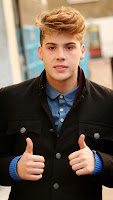Evaluation.
At the start of the term I had never used Photoshop before, ever. I had used similar programs such as Gimp and the basic Paint though. I had also seen Photoshop tutorials on YouTube a few times for other reasons. However, now I feel like I know the basic Photoshop tools and even quite a few of the more complicated ones. I’ve downloaded Photoshop at home and I’ve really got to grips with the majority of what you can do on it. Without a doubt, the animal face project helped me with my final piece more than any of the work. Once I learnt about the opacity rubber tool, and blending things together I could literally do more and more. At first I kept forgetting to switch layers, but over time, it became a habit to keep switching back and forth and became second nature.
I think the most important tool I’ve learnt to use was just Photoshop in general as I couldn’t use it at all before, now I feel like I can make anything on it. During my final piece I edited some faces onto different bodies, and I’m really impressed with the quality of my own work, it looks unbelievably real. The tools I used for this were the pen tool to cut around it, and the rubber tool to blend it into the background smoothly. I also used layers effectively and for my magazine cover I think I had to use over forty of them. The dodge tool helped a bit too just to give it that finishing touch, and to blend parts together. I also learnt quite a bit more about file formats. I knew the basics such as jpeg’s and gif’s but now I know why different formats are used and what they do. I know which formats save higher than others, what there main purpose is and when the correct time to use them. I feel comfortable that I’m saving my work in the correct format. It really does make a difference from looking amateur somewhat to high quality, professional. I think learning the different uses of each format is the most important thing I’ve learnt.
As for my final pieces, I chose to design an album cover and back, and a magazine cover. Although I am thoroughly pleased with both, I’d have to say my favourite piece of work is the album cover and back. I didn’t just create the cover for the sake of it, I thought about the title and made sure it had an underlying meaning, and tied in with the theme too. My album cover is a light-bulb, with a lit up city inside, the title of my album is ‘’All The Small Things’’. The underlying meaning is that all the small things can combine together to make something huge. This inflicts on the band, the four men can combine to make huge tracks and inspire the world. The light-bulb is a reference to lighting up the city, creating a huge atmosphere, when really they’re just lights. I honestly could see the cover being in a shop on the shelf, it fits perfectly with the simple album designs I researched and put onto my blog. It’s simple and stylish, the band name and album title are all on show and it’s not crowded. I think it looks fantastic.
I think it jumps out at you, the rest of the cover is so plain, except for the one image, and it’s that image I wanted the attention to be on. Compared to five covers I’ve seen by the Kings Of Leon, I think my cover is as good, if not, even better. The back of my cover is slick and stylish too, the track listing is small, but as it’s the only text visible, it’s easily read. It’s very similar to album backs in the shops today. The fact it’s bright and colourful, yet quite plain, has a really strong impact and I think would help increase sales. My audience would be anyone really, I styled my fake band on already existing Kings Of Leon, and everything I created looks similar to their stuff. I think the audience would be teenagers and adults under forty. It’s not to say others won’t enjoy the music, it’s just generally who I’m aiming it at with song titles such as ‘’Cocaine and Vegas Aint’ All That.’’
I’m also very impressed with the quality of my magazine cover, but if I could change anything; it’d be that. I don’t like the fact I changed my main image to black and white, when all other magazines of that genre have full colour. I don’t like that I’ve slanted the title of ‘’NME’’ when NME never slant their titles. I should have realised this when doing my research and looking at existing covers that have been created. I just didn’t notice. I would also rescale my magazine as when I saved it, I cut half of face off from one of the band members, I tried printing to fit-to-scale but it didn’t work. I lost the half of his face when I saved it incorrectly.
The skills I’ve learnt whilst doing this project have been very useful with my website design. I’ve found myself creating more professional background and banners, I’ve created better text effects to by adding drop shadows and gradient overlays. These are skills I could take into a web-design based job, or even graphic design related industries. I’ve really enjoyed designing the magazine and album covers on Photoshop and I’m delighted with my final outcome.
- Jack Dean.



















































